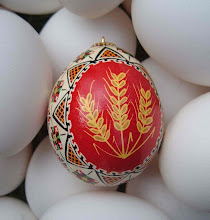Tuesday, April 20, 2010
How to Plant Peas
Time to plant peas, which need cool weather. Here in Vermont we sometimes don't get a real springtime. The saw is that we go from mud season to summer, and it's not unheard of to have 90 degree weather in May. So the best peas will be started just about as soon as the soil can be worked. June 1st is about the last possible date for spring peas, and I think it's an iffy last date. Growing up we planted the whole garden memorial day weekend (which was the 31st way back then) but our growing season is a few weeks longer in the spring than it used to be.
If you're going to grow peas that need support it's good to plan ahead. I grow my tall peas on chicken wire, or sometimes just parallel strings, but in either case I dig holes for wooden plant stakes before I plant the row, so they're ready to add the fence (but you could pound them in later). If your peas could use a little support you can add "pea brush" after you've planted. Just take brush and push into the soil and the peas will cling to the branches. I wouldn't do that for any peas that grew taler than 30 inches.
Peas don't need a lot of fertilizer, even in my barren sandy soil, because - like all legumes - they have a symbiotic relationship with bacteria that fix nitrogen to the roots. These bacteria pull nitrogen from the air and concentrate it in nodules on the roots, making it available to the plants (you can buy an innoculant for your peas and beans to make sure this happens. I don't). But I always put a light sprinkling of fertilizer on the surface of the soil and work it in with a cultivator. Too much fertilizer can rot the pea seeds, so you can instead add fertilizer after the peas are up, if you feel you need it.
The directions on the back of my packets of Johnny's pea seed varieties say to sow in a band 3 inches wide, with the individual seeds 1 - 1 1/2 inches apart, with no need to thin. My bands are maybe just a little wider. I do see some folks growing pea seeds in a single straight row, and that's really not necessary. The productivity from this row will be much higher, and it makes optimal use of the space. I vary from this only when I grow short peas that don't need any kind of support, and then I grow three single rows separated by about 8 inches, and the peas when they grow will tangle up and support each other.
I used to sow the seeds at the bottom of a little trench, cover them with 1/2-1 inch of soil, and firm the soil. My friend JP had much better and more even germination than I did, so I now use his method of preparing the row, sowing, and then pushing each seed into the soil to just above my first knuckle (the four holes in the picture above). This sounds like a lot of work, and if I were planting more than I do it would be impractical. But it doesn't take that long, and only needs to be done once. I do this for about 100ft of peas, but not all of them are planted at the same time. Different varieties and different planting dates give me peas over a long season.
After the seeds are pushed down I brush a little soil over to cover the holes, and gently firm with my hand.
Subscribe to:
Post Comments (Atom)





SO helpful! Thank you for providing this information. I've been planting way too far apart!
ReplyDelete